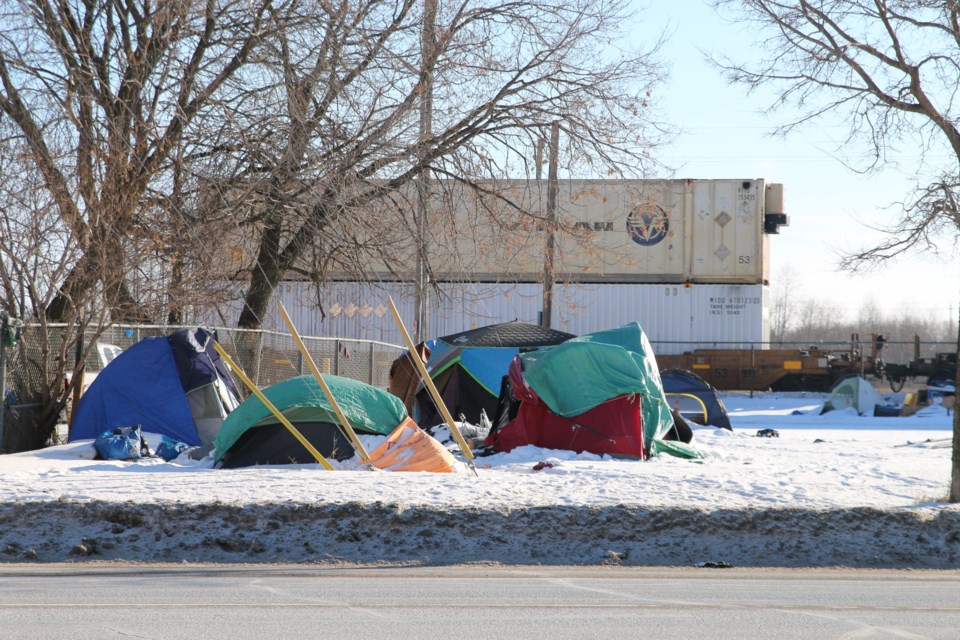THUNDER BAY — An increase in the number of shelter beds and transitional housing available in the city reflects a big increase in homelessness, according to local officials.
“We've definitely seen across the district a pretty big increase actually in homelessness and much more visible homelessness as well as homeless encampments,” said Aaron Park, manager of housing and homelessness programs for the Thunder Bay Social Services District Administration Board.
The number of shelter beds available in the Thunder Bay district nearly doubled over the last 10 years.
From 2014 to 2024 the number of beds went from 96 beds to 188, according to the DSSAB's ten-year final report on housing and homelessness. Most of that increase took place since 2020.
- In 2014, only Shelter House and the Salvation Army provided shelter beds.
- Grace Place launched its Out of the Cold program in 2017, increasing the number of beds to 106 with 10 more beds.
- In 2020, the city saw a slight reduction of beds to 108 as the Salvation Army moved into their new building and overflow capacity was not immediately available.
- In 2021 and 2022, there were 128 beds available as the Urban Abbey opened 10 beds specifically for women, and the Salvation Army added overflow spaces.
- In 2023, Urban Abbey opened an additional 10 women-only beds, and the Salvation Army added more overflow capacity, increasing the number of beds to 148.
- In 2024, Urban Abby opened its mixed-gender shelter with 20 available beds, and extra overflow beds were added at Grace Place and Shelter House, increasing the total number of beds to 188.
Transitional housing — longer term accommodations with support services available to assist with a transition to permanent housing — has also increased over the last 10 years. Park said the city had “almost none” back in 2014.
However, over the past few years, the province’s increases in homelessness prevention funding have allowed the DSSAB to invest in capital projects.
Park said 150 transitional housing beds have come online over the past few years, with more on the way in the next year.
“If we have an opportunity to provide some programming with the roof over their head so that they could work on some of the skills that they require to live successfully, then I think that's a big piece that was missing. It’s nice to see that development,” said Park.
The DSSAB also offers a private landlord rent supplement program and a portable housing benefit program that helps subsidize rents for individuals on the DSSAB’s community housing wait list.
The increase in shelter beds and transitional housing reflects a growing need to address Thunder Bay’s housing crisis said Park.
Park said that homelessness has always existed but “to a much lesser degree” and was “much more hidden in the past.”
All 188 emergency shelter beds in the district are located in Thunder Bay; but the issue of homelessness is not limited to the city.
The DSSAB serves 15 municipalities in the region, including Nipigon, Greenstone, Marathon, and Manitouwadge.
Currently, there are no emergency shelters located outside of Thunder Bay.
The problem, said Park, is that the TBDSSAB has not found a willing partner to open an emergency shelter.
Geraldton Family Resource Centre and Marathon’s Marjorie House do offer crisis housing for victims of domestic violence.
“We've definitely heard from individuals that say yes homelessness is growing, it's becoming more of a factor. What we haven't been hearing from folks in X, Y, or Z organization willing to open up and run an emergency shelter in this location,” said Park.
TBDSSAB doesn’t operate emergency shelters but provides the funding for not-for-profit organizations to offer those services.
Park said that DSSAB has an arrangement with the Ontario Provincial Police where the OPP can bring a homeless individual to a motel for the night, while the DSSAB sees “what sort of long-term solutions could be worked out for that individual from there.”
“So, sort of stabilize them for a night, especially if it's cold or inclement weather, and then from there have support partners try and assess what other services that individual might need,” said Park.
“Oftentimes, they will migrate to the city of Thunder Bay because there are those services there. That's unfortunate because sometimes, that means leaving behind perhaps friends or family from that location, and that’s not ideal.
“But in the absence of a support partner in those communities that are willing to take on that role, it's what we have.”
